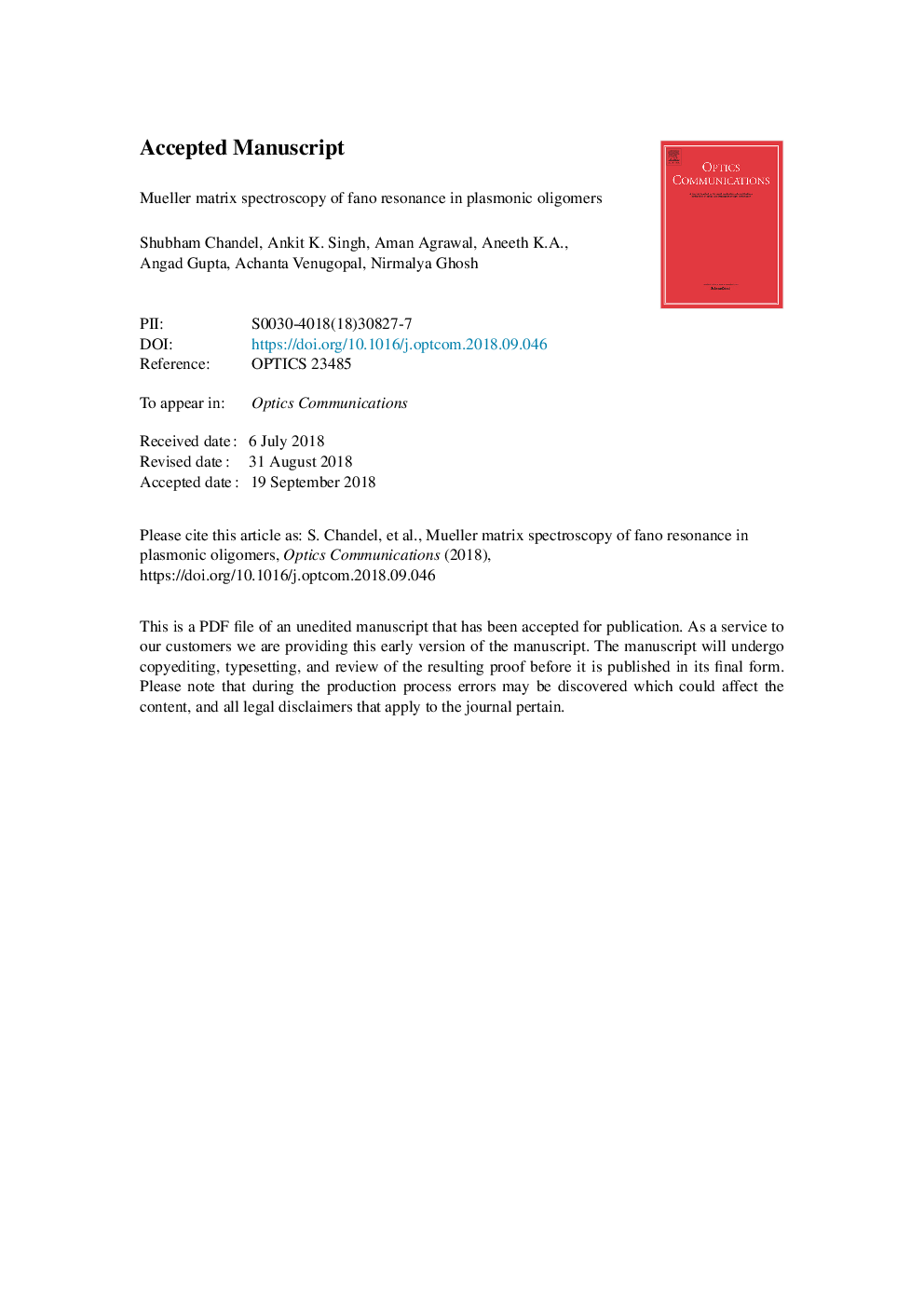| Article ID | Journal | Published Year | Pages | File Type |
|---|---|---|---|---|
| 11001459 | Optics Communications | 2019 | 15 Pages |
Abstract
Fano resonance in plasmonic oligomers originating from the interference of a spectrally broad superradiant mode and a discrete subradiant mode is under intensive recent investigations due to numerous potential applications. In this regard, development of experimental means to understand and control the complex Fano interference process and to modulate the resulting asymmetric Fano spectral line shape is highly sought after. Here we present a polarization Mueller matrix measurement and inverse analysis approach for quantitative understanding and interpretation of the complex interference process that lead to Fano resonance in symmetry broken plasmonic oligomers. The spectral Mueller matrices of the plasmonic oligomers were recorded using a custom designed dark-field Mueller matrix spectroscopy system. These were subsequently analyzed using differential Mueller matrix decomposition technique to yield the quantitative sample polarimetry characteristics, namely, polarization diattenuation (d) and linear retardance (δ) parameters. The unique signature of the interference of the superradiant dipolar plasmon mode and the subradiant quadrupolar mode of the symmetry broken plasmonic oligomers manifested as rapid spectral variation of the diattenuation and the linear retardance parameters across the Fano spectral dip. The polarization information contained in the Mueller matrix was further utilized to desirably control the Fano spectral line shape. The experimental Mueller matrix analysis was complemented with finite element based numerical simulations, which enabled quantitative understanding of the interference of the superradiant and the subradiant plasmon modes and its link with the polarization diattenuation and retardance parameters preparation.
Related Topics
Physical Sciences and Engineering
Materials Science
Electronic, Optical and Magnetic Materials
Authors
Shubham Chandel, Ankit K. Singh, Aman Agrawal, Aneeth K.A., Angad Gupta, Achanta Venugopal, Nirmalya Ghosh,
